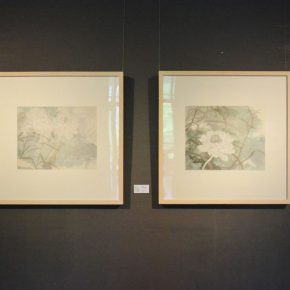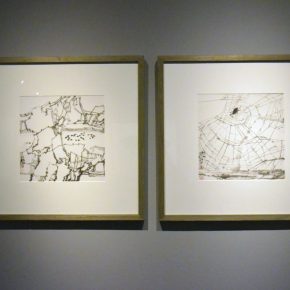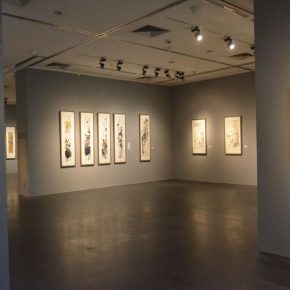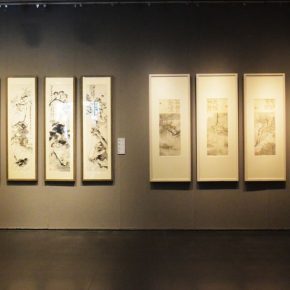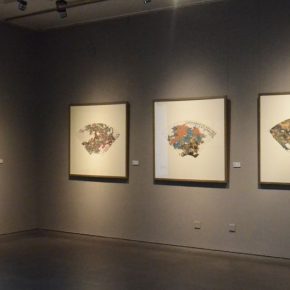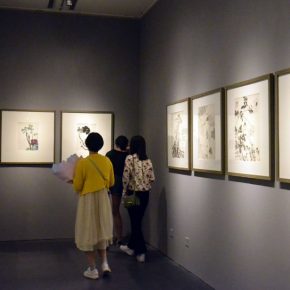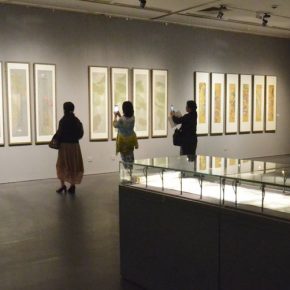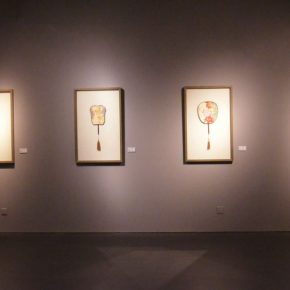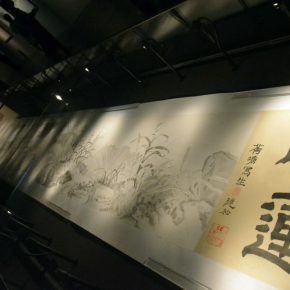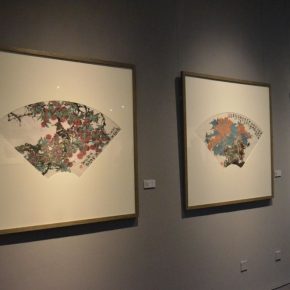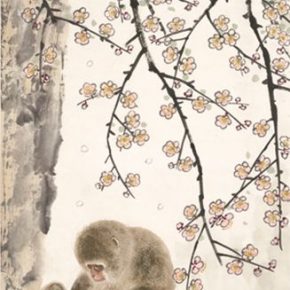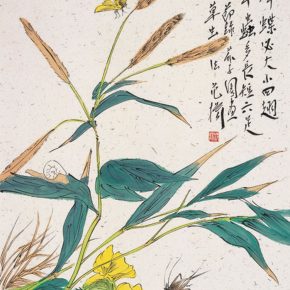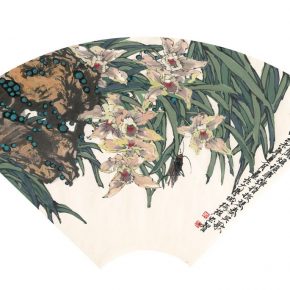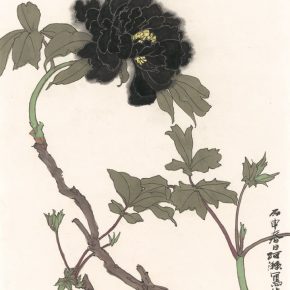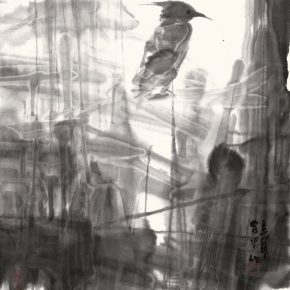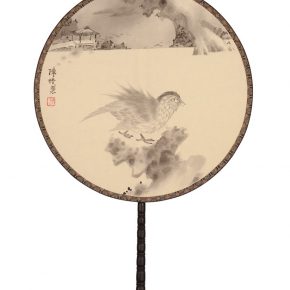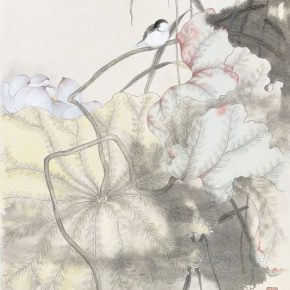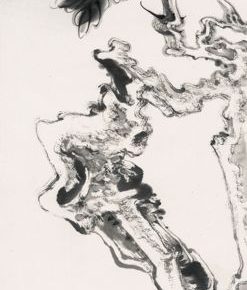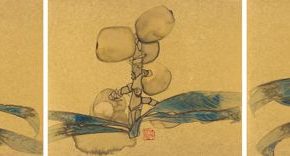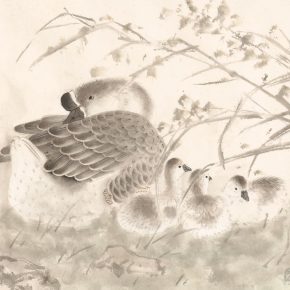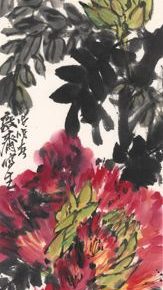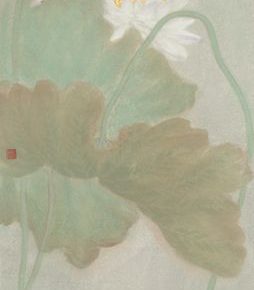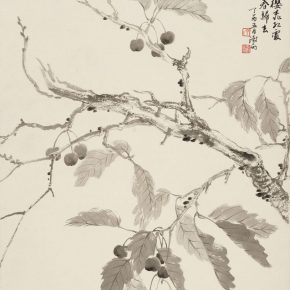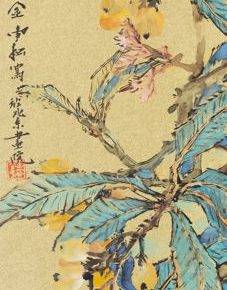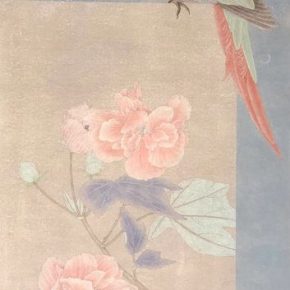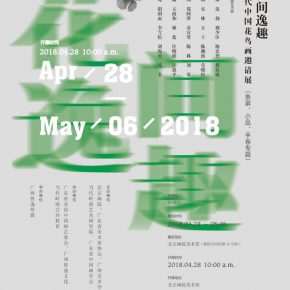
On the morning of 28 April 2018, jointly hosted by Beijing Fine Art Academy, Guangdong Artists Association, Guangzhou Academy of Fine Arts, Contemporary Lingnan Art Research Center and Guangdong Provincial Society of Chinese Painting, co-sponsored by the Art Committee of Chinese Painting at Guangdong Artists Association, Guangzhou Luyi Culture and Contemporary Lingnan Public Education, organized by Guangzhou Luyi Media, and planned by Xu Xiaosheng, “Tasteful Leisure among Flowers – Contemporary Chinese Bird-and-Flower Painting Exhibition” commenced at Beijing Fine Art Academy. Many artists and honored guests from Beijing and Guangdong attended the opening ceremony, in addition, Deputy Dean of Beijing Fine Art Academy and Director of the Art Museum of Beijing Fine Art Academy, Wu Hongliang, Vice Chairman of China Artists Association and Director of Beijing Fine Art Academy Art Committee, Wang Mingming, a member of the council of the Society of Chinese Painting, Xing Shaochen, Dean of the School of Art at Anhui University, Chen Lin, all delivered a speech at the opening ceremony.
From a study of the history of art, the earliest Chinese bird-and-flower painting that we know of was the “Double Crows Residing in a Tree” from the murals on the Taocang building of the Eastern Han Dynasty, and the “Critique on Painting (Hua Pin)” by Xie He of the Southern Qi recorded the painter Liu Yinzu of the Eastern Jin Dynasty as the earliest bird-and-flower painter that we recorded. In the Tang Dynasty, it gradually became an independent category of painting from the decorative painting and it developed and became more mature during the Five Dynasties and the Northern Song Dynasty, and then it appeared as a variety of styles, such as an elaborate style of the royal family and unrestricted style of Xu Xi. The literati painters of the Dynasties of Yuan, Ming and Qing did not only strengthen the symbolic significance of the flower-and-bird painting, but also broadened the expressions. As the times changed, Chinese flower-and-bird painting also faced unprecedented challenges, and it started an exploration and transformation of flower-and-bird painting, many artists including Zhao Zhiqian and Wu Changshuo of the Shanghai School, Gao Jianfu, Gao Qifeng and Chen Shuren of the Lingnan School, as well as the modern painters Qi Baishi, Huang Binhong and Lin Fengmian all attempted to boldly make innovations and to combine new implications with Chinese flower-and-bird painting. Nowadays, Chinese society, people’s lifestyles and aesthetic tastes have greatly changed, and we would like to ask what the current significance of this old form is, and how it will be in the future.
In the face of this “anxious” state of contemporary Chinese painting, Vice Chairman of China Artists Association and Director of Beijing Fine Art Academy Art Committee, Wang Mingming, said that it was important for artists to discover the beauty of life and recreate their own works. All artists participating in this show own their independent creative perspectives and unique expressions and forms. He said “this show reflects that the painters are inheriting Chinese traditions, they are confident in Chinese traditions. This exhibition has introduced a lot of inspiration at this level.”
The “Tasteful Leisure among Flowers – Contemporary Chinese Bird-and-Flower Painting Exhibition” presents the works by 25 young and middle aged painters of contemporary Chinese flower-and-bird painting, include Fang Chuxiong, Fan Yang, Xing Shaochen, Mei Zhongzhi, Li Zhucheng, Wang Juming, An Lin, Fang Tu, Chen Xiangbo, Mo Xiaosong, Lian Junzhou, Zheng Apai, Qiao Yi’nan, Chen Lin, Liu Ying, Han Lu, Fang Zhenghe, Lin Lan, Xu Xiaobin, Xu Dunping, Ye Peng, Yin Shuyu, Li Xuesong, Liu Haiyong and Han Fei. Their works do not only contain the elements and roots of Chinese painting, they also apply new expressions and artistic forms, and it is a microcosm of multiculturalism of our current lifestyle. The works are presented in the form of screens, sketches, and scrolls, reflecting the contemporary bird-and-flower painters that combine traditional implications and contemporary spirits with a variety of forms, the exhibition started with the visual art and academic ideas, they profoundly record the inheritance, development, fusion and innovation and contemporary appearance of contemporary Chinese flower-and-bird paintings.
The social changes of the 20th century promoted the forms of flower-and-bird paintings that led to rapid innovation. Currently, society is full of movies, images, texts, and a variety of media, and people are accustomed to these complicated and colorful aspects. “When there is nothing that is worthy of being questioned, and the form has been greatly developed, then it appears as a new puzzle of art.” As the preface of the exhibition writes, the topic of “Tasteful Leisure” is proposed in order for there to be a reflection on the artists’ aesthetics and values in a contemporary context, and the exhibition hopes to review the current cultural situation and value structure through the exploration of forms and styles, artistic ideas and aesthetic tastes, as well as discussing the innovations of flower-and-bird art in the contemporary context.
Text and photo by Lin Jiabin, translated by Chen Peihua and edited by Sue/CAFA ART INFO
(Images of the works courtesy of the organizer)


